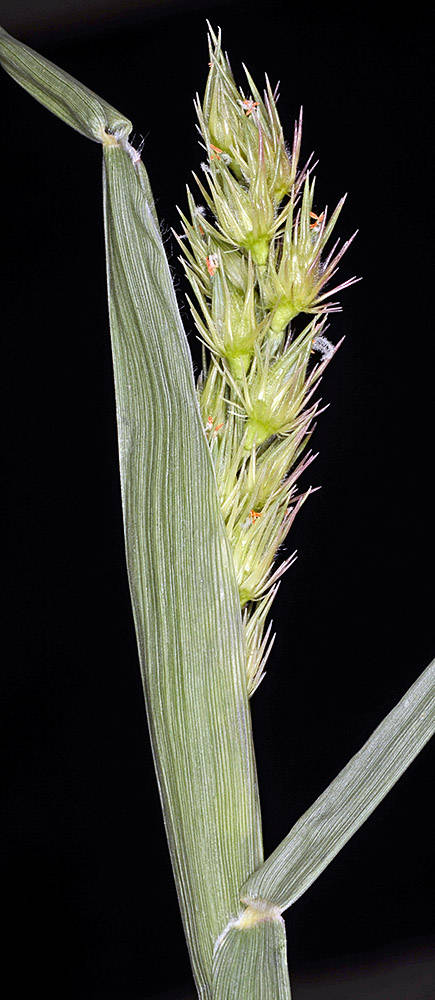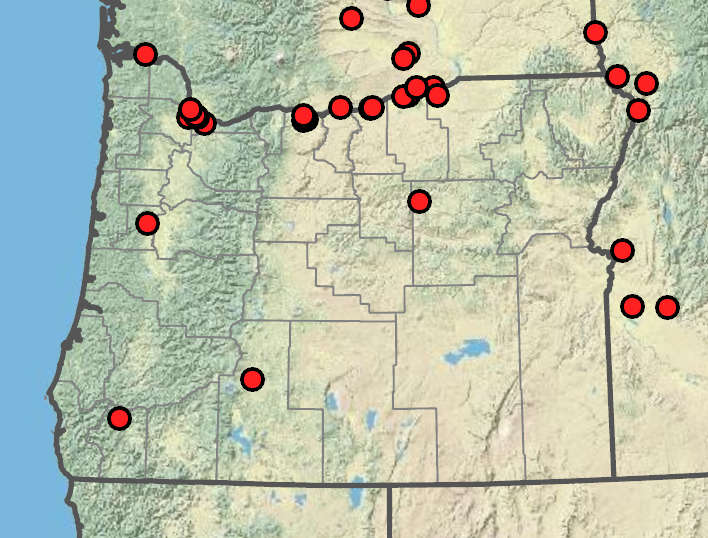Cenchrus spinifex
Cenchrus longispinus
longspine sandbur
sheaths keeled and laterally compressed;
blades 4–27 cm × 1.5–5(7.5) mm;
upper surface scabrous or with sparse hairs.
spike-like panicles, 1.5–8(10)cm × 10– 20 mm, with spikelets enclosed in bur-like fascicles of hard, often spine-tipped branches.
2–3(4) per fascicle; (4)5.8–7.8 mm.
lower glumes 0.8–3 mm;
upper glumes 4–6 mm; lower lemmas 4–6.5 mm; upper lemmas 4–7.6 mm.
8.3–11.9 × 3.5–6 mm; more or less globose, pubescent, with 45–75 bristles; the longer bristles 3.5–7 mm.
of lower florets 1.5–2 mm, anthers of upper florets 0.7–1 mm and poorly developed.
=34.
Cenchrus spinifex
Cenchrus longispinus
Disturbed sandy soil. 0–600m. Col, Lava, Sisk, WV. CA, ID, NV, WA; north to British Columbia, east to New Brunswick and FL, south to Venezuela. Native.
The round, painfully spiny burs make this grass unmistakable. These plants flower and set seed late in the growing season.
Barbara Wilson, Richard Brainerd, Nick Otting
- Local floras:
BC,
CA,
OR,
WA
- Local Web sites:
CalFlora,
CalPhotos,
Flora NW,
PNW Herbaria
WildflowerSearch
iNaturalist (observations)
USDA Plants Database
- LBJ Wildflower Center
- SEINet
- Plants of the World Online
- Encyclopedia of Life
- Wikipedia
- Google Image Search



